Skip To...
Alone in the Dark is a time capsule. Though the point was to preserve nostalgia like a mosquito fossilized in amber, so much more occurred. It’s equal parts Lovecraftian gothic and ’90s survival horror, but modern QoL changes keep it from feeling like a relic. If you’ve played any of the recent Resident Evil remakes you’ll have a taste of what you’re getting, but that comparison doesn’t do the game justice. It’s less flashy and more cerebral. Instead of the flesh-eating dead, you have Darkest Dungeon-style madness and forbidden knowledge. Like Lovecraft’s writing, Alone in the Dark has obvious problems, but none that kept me from enjoying my descent into the shadows.
Alone in the Dark Review
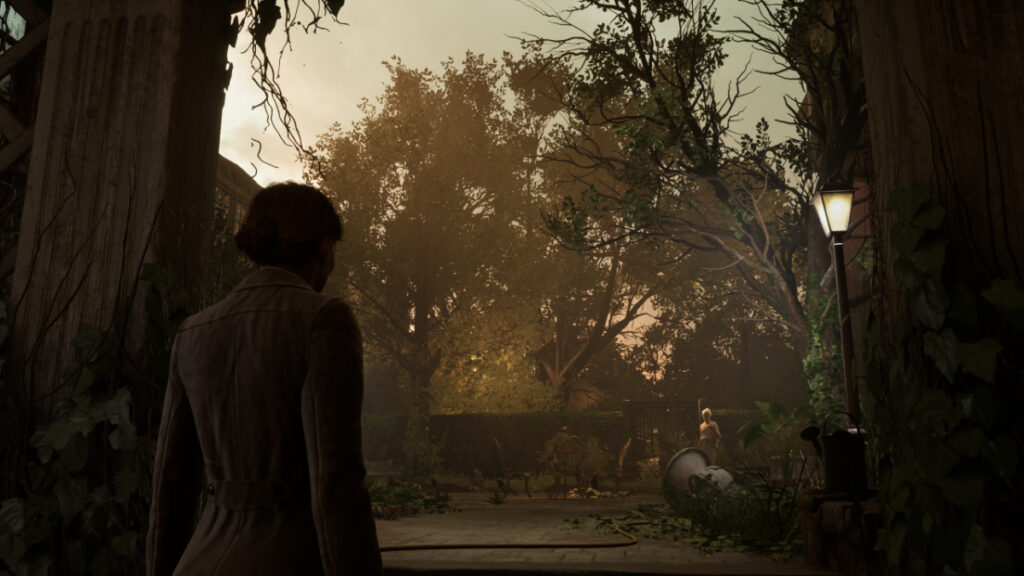
A classic survival horror experience with a modern look, Alone in the Dark sees you solving puzzles, fighting monsters, and unraveling sinister mysteries. Combat takes a definite backseat to brainteasers, and you’ll spend most of your time searching for keys, manipulating block puzzles, and pouring over old manuscripts for hints. Backtracking to visit previously inaccessible areas is a constant as you unlock more of the manor and other environments. Beautiful designs make the trip back worth it, however, as does the slow-building dread. Like Lovecraft’s stories, Alone in the Dark aims for gnawing discomfort rather than cheap jump scares and excessive gore.
Story: Shadows in the Bayou
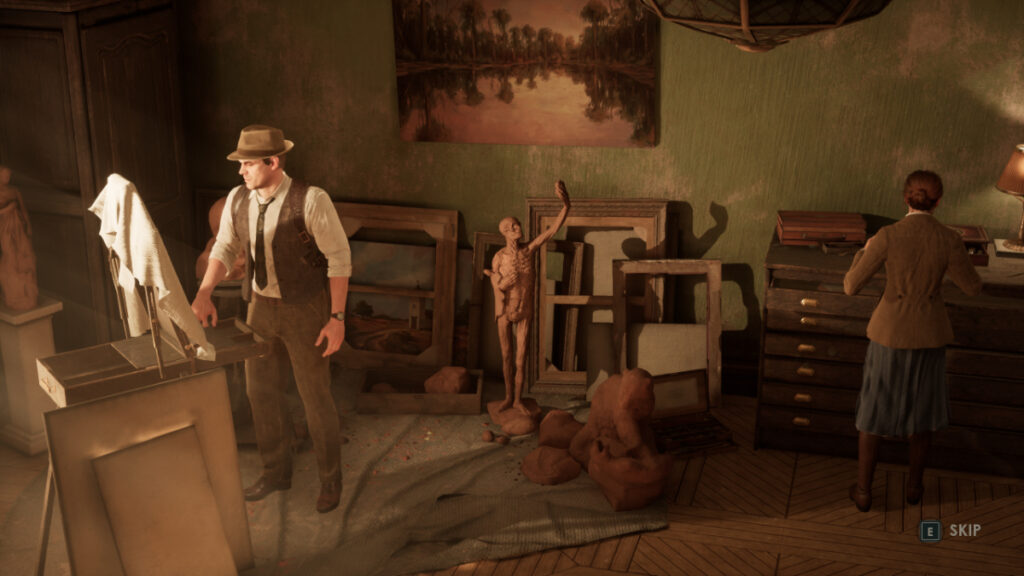
When Emily Hartwood receives a disturbing letter from her uncle Jeremy, she knows she has no choice but to pay him a visit. Enlisting the aid of Private Investigator Edward Carnby, Emily journeys into the Bayou to visit Derceto Manor, a home for the mentally fatigued. Upon arriving, however, the pair learn that Jeremy has disappeared. In Southern Gothic tradition, Alone in the Dark is about rot and neglect. It’s a theme found in the crumbling headstones and sodden swamp logs as much as the decay of its characters’ minds and morals.
Edward and Emily separate upon arrival, and the story changes with who you play. Some scenes are the same, while others change in dramatic ways. Several areas are exclusive to each character, giving you good reasons to play through twice. Though the story takes you to dilapidated graveyards and oil-slickened bogs, Derceto remains its heart. As the hub you return to between your adventures in spookier climates, Derceto Manor is as worthy a centerpiece as the Raccoon City Police Department. Poe himself would smile at the unrelenting and discomforting heartbeat of the place.
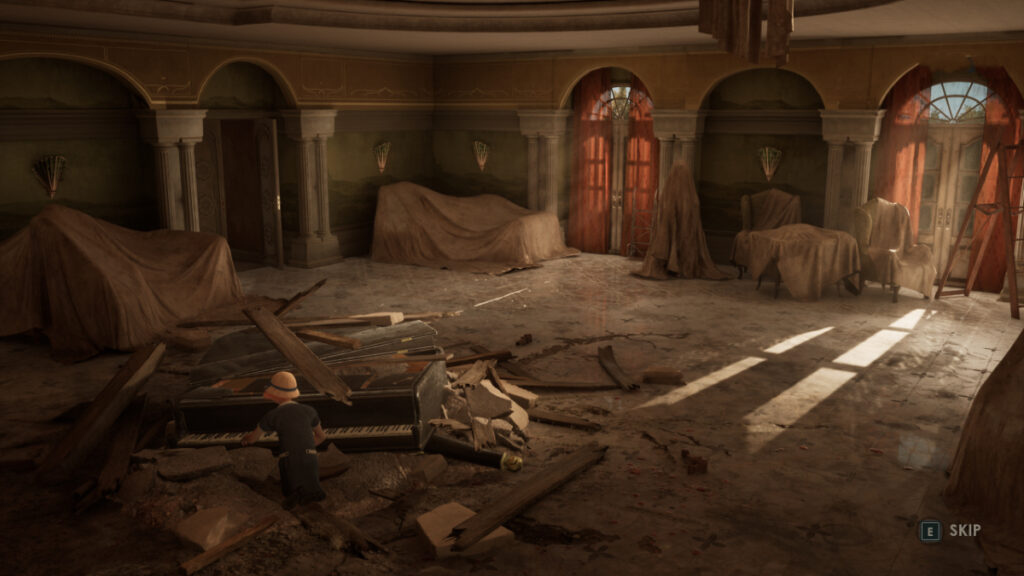
Most of the plot comes either in cutscenes or notes. Sinister weirdos are a hallmark of both Southern Gothic and noir, and since Alone in the Dark is both, there are plenty here. The cutscenes are well-acted but suffer from heavy-handed writing. I’m okay with ham-fisted dialog when blunt force fits the mood, but when your themes are as delicate as these, it’s no time for pork bludgeoning. The notes are much better, hinting toward puzzle solutions while allowing you to delve into the psychologies of Derceto’s staff and residents.
Though games as diverse as Bloodborne and Amnesia: The Dark Descent take inspiration from Lovecraft, Alone in the Dark imports characters and concepts straight from the Mythos. That kind of shared world-building is exactly what Lovecraft practiced and supported while alive, so he’d probably delight at the allusions to the Black Goat of the Woods and other concepts. If anything, I wish Alone had taken these references further and done more to build its world around them. Still, I appreciate them for the texture and creep factor they add.
Gameplay: Clues and Bullet Casings
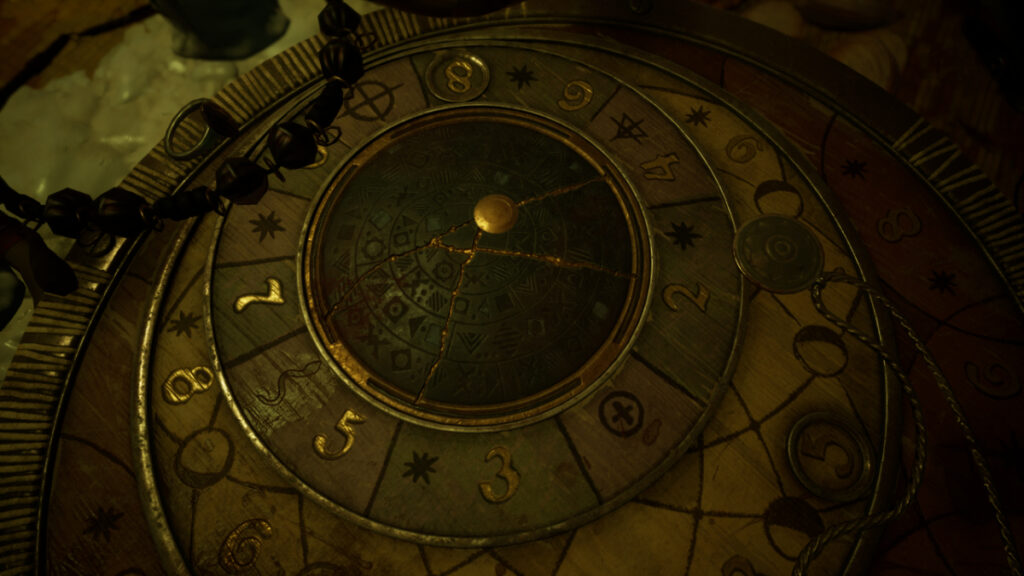
Alone in the Dark offers you a choice before you start: Modern or Classic Mode. Modern not only offers hints in your journal but also highlights interactable items in the environment and clues in notes. Classic removes these supports. If you’re a purist determined to solve every astrological code lock and blueprint puzzle yourself, Classic is waiting with open arms. I take to puzzles like a trout to the Sahara, but Modern provided enough support that I rarely felt overwhelmed. I did brute force the combinations of one stubborn lock, but the clues were there had I been wiser.
Bullets and healing drinks are scarce. If you unload your revolver in a panic or take too many blows, you’re probably dead. Enemies vary from Swamp Thing-esque vegetable men to fleshy bat monstrosities, but they all have simple attack patterns. The combination of telegraphed attacks, a generous dodge window, and clunky enemy movements means most foes will struggle to hit you if you’re paying attention. Elden Ring bosses these aren’t. Combat is a side dish to the entree of puzzle-solving, but it’s still disappointing to learn that the already small portion is unseasoned too.
Exploration fares much better. Alone in the Dark is proof that backtracking can be fun when it’s done right. Unlocking a new room in Derceto Manor feels like snapping a Rubix Cube row into place and seeing the colors align. Shuffle wooden blocks around to form an image. Bounce light off mirrors to open a door. Decrypt the ravings of Derceto’s residents to discover the key to opening a safe. If you scratched Alone in the Dark, it would bleed nostalgia. Ditching fixed camera angles is one of the game’s few major concessions to modern gaming, and it’s a wise one.
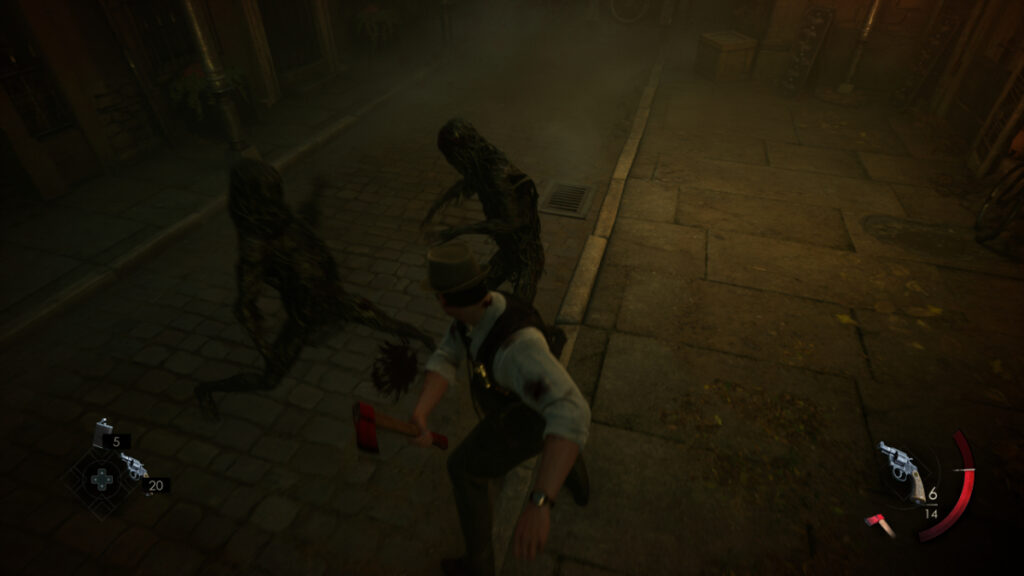
As you explore you’ll unlock new realms using a supernatural talisman. Your time there is brief but impactful, including some of the game’s best moments. Progressing through the talisman rewards you with progress through Derceto, inching forward the manor’s story while allowing you to wrap up the stories of these other worlds in a single trip. It’s hard to describe how good the pacing of Alone in the Dark feels thanks to this design decision. One playthrough can take 6-10 hours depending on your talent with puzzles, but the game’s brisk pace made me want to jump right into Edward’s story after finishing Emily’s.
Checking every nook and cranny is essential. In addition to bullets and recovery items, you’ll also find Lagniappes. Collect three of these trinkets to complete a set and claim a reward ranging from new weapons to secret lore. It turns out I’m happy to scour bathtubs and kitchen cabinets in search of random collectibles if it means I get a double-barreled shotgun for completing the set. Since many Lagniappes are exclusive to Emily or Edward, you’ll need to play the game twice to collect everything. Alone in the Dark already rewards replays with new endings, unique cutscenes, and additional areas. The Lagniappes feel like the cherry on top.
Graphics & Audio: Bog Lights
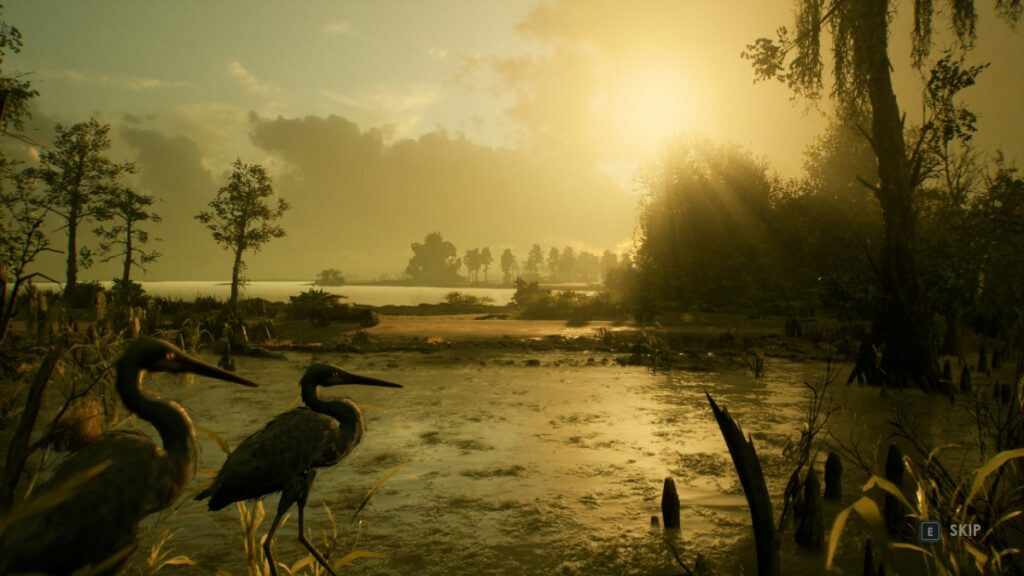
The iron key slides into the door, and with a pop the mechanism snaps open. Emily steps through the door and onto the walkway above the manor’s courtyard. Lousiana’s buttery sunshine paints the overgrown flowerbeds and cobblestones below, but it doesn’t seem to warm anything. Fallen leaves stir with the dry rasp of a dead beetle’s wings. Every step Emily takes elicits a groan from the aged wood. When she lets herself through the door opposite and into the marble hall, the door swings shut behind her of its own accord. Alone in the Dark doesn’t need the dark to unsettle you.
The art team at Pisces Interactive outdid itself. From desert ruins to WWI trenches, every location takes you by the collar and hauls you into its world. The Flapper Era fashion and character designs look great as well, although stiff animations sometimes detract from realism. The various guns and melee weapons feel good enough that I was always happy when enemies reared their deformed heads. Though the fights sometimes look janky, several levels were so beautiful I dropped everything else to gawk and take screenshots.
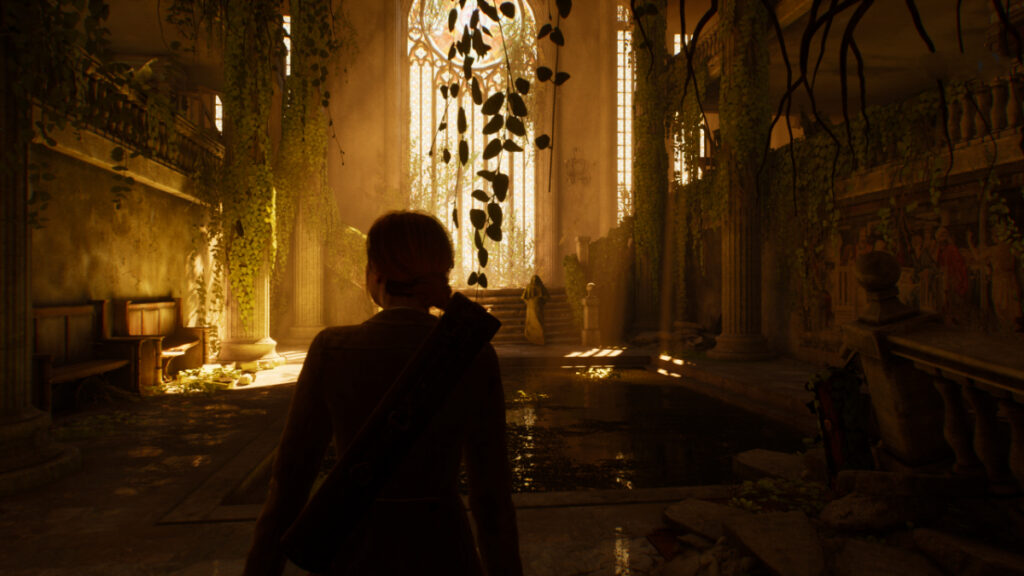
Alone in the Dark‘s sound design is even better. Pisces Interactive weaponizes silence against you, leaving many sections devoid of music. With only your footsteps and the occasional door creak to accompany you, the tension gets toothy fast. The music is unsettling when it arises, but the foley work and ambient sounds are the stars. Play enough survival horror games and you get an ear for halfhearted gunshots and growls. These aren’t those. In a game about monsters, creeping madness, and the frailty of human life, nothing scared me as much as hearing a door gently shut behind me.
Related:
10 Best Horror Games of 2023My only real complaint is about the animation. No matter how realistically you paint a doll, if it moves woodenly, it feels like a puppet. The NPCs and enemies in Alone in the Dark aren’t awful, but there’s a stiffness there that shouldn’t be. A few cutscenes lost their oomph when the NPC talking got a bad case of Cedar Face. The voice work is good, but it’s hard for me to separate it from the masks it’s coming out of. Thankfully, Edward and Emily’s animations look and feel about right. They don’t compare to Alan Wake 2‘s heroes, but they hold their own.
Conclusion: A Lingering Curse
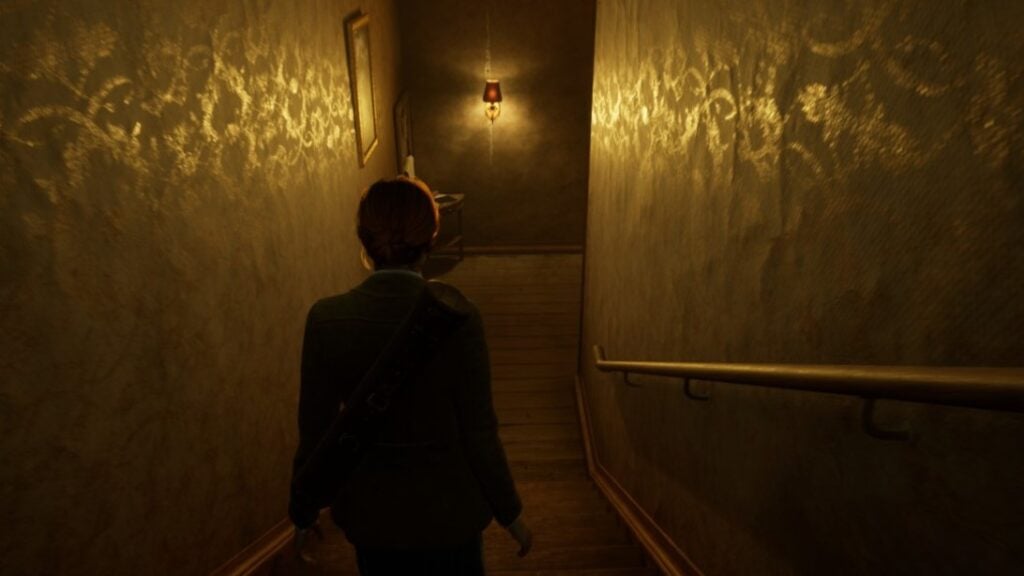
The technical issues I experienced are all scheduled for a Day 1 patch, leaving only small bugs to criticize. If you have childhood memories of Alone in the Dark or Silent Hill that you’re eager to revisit without a time machine or therapy, this game won’t disappoint. QoL improvements like the updated camera and Modern hint system do wonders to improve the feel of the game without losing its soul. If you love the original or want a less combat-oriented take on the Resident Evil remakes, Alone in the Dark is fabulous. Its combat, animations, and writing sometimes miss the mark but not in ways that ruin it. It’s a flawed but sincere horror story, which is already more than most of its competitors deliver.
Alone in the Dark is available for PC (Reviewed), PlayStation 5, and
Review copy given by Publisher.
Alone in the Dark Review
A '90s survival horror throwback modernized with a visual overhaul and much-needed QoL changes but hampered by rough writing and animations.
Pros
- Enjoyable story and pacing
- Clever puzzles
- Good replay value
Cons
- Disappointing enemies and combat
- Inconsistent writing
- Some rough animations







